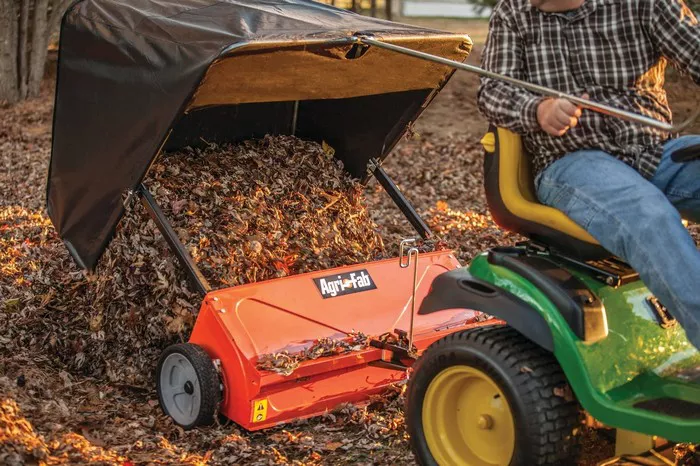Gumballs, those seemingly innocuous spheres scattered across lawns, can quickly become a nuisance for homeowners. These small, spiky balls are the fruit of the sweetgum tree (Liquidambar styraciflua), which is prevalent in many regions across North America. Gumballs, also known as sweetgum balls or gum balls, typically measure around 1 to 1.5 inches in diameter and are covered in a prickly shell. While they may seem harmless, gumballs can pose several challenges for homeowners, particularly when it comes to maintaining a tidy lawn.
Challenges with Gumballs
The main difficulty with gumballs lies in their size and spiky exterior. Traditional lawn maintenance tools such as mowers and rakes often struggle to effectively pick up gumballs due to their small size and tendency to get caught in the grass. Additionally, the prickly nature of gumballs can make them unpleasant to handle and can even cause injury if stepped on barefoot. As a result, many homeowners find themselves frustrated by the presence of gumballs on their property and seek effective solutions for their removal.
Lawn Sweeper Mechanics
Lawn sweepers are a valuable tool for homeowners looking to rid their lawns of gumballs efficiently. These devices, which resemble a large wheeled cart with a rotating brush mechanism, are designed to sweep debris such as leaves, twigs, and yes, gumballs, off the lawn’s surface. As the sweeper is pushed or towed across the lawn, the rotating brushes collect debris and deposit it into a hopper or bag for easy disposal. Lawn sweepers are typically adjustable, allowing users to set the height of the brushes to accommodate different types of terrain and debris.
Best Practices
To effectively use a lawn sweeper for picking up gumballs, there are several best practices to keep in mind. First, it’s essential to choose the right type and size of lawn sweeper for your needs. Look for models with sturdy construction and adjustable brush height settings to ensure optimal performance. Additionally, it’s helpful to mow the lawn before using the sweeper to remove any tall grass that could interfere with the sweeping action.
When operating the lawn sweeper, be sure to move in overlapping rows to ensure thorough coverage of the lawn surface. Pay close attention to areas where gumballs tend to accumulate, such as around trees or along the edges of the lawn. Empty the hopper or bag regularly to prevent it from becoming too full and impeding the sweeper’s performance.
Product Recommendations
Several lawn sweeper models have garnered praise from consumers for their effectiveness in picking up gumballs. Among these, the Agri-Fab 45-0492 Lawn Sweeper and the Ohio Steel 50SWP26 Pro Sweeper are often cited for their robust construction and efficient debris collection capabilities. These models feature durable brushes and large capacity hoppers, making them well-suited for tackling even large quantities of gumballs.
Before making a purchase, be sure to read consumer reviews and compare features to find the best lawn sweeper for your specific needs and budget. Additionally, consider factors such as the size of your lawn and the frequency of gumball accumulation when selecting a model.
Maintenance Tips
Proper maintenance is essential for ensuring the longevity and effectiveness of your lawn sweeper, especially when used for picking up gumballs. After each use, thoroughly clean the sweeper to remove any debris that may have accumulated on the brushes or in the hopper. Inspect the brushes for signs of wear and tear, and replace them as needed to maintain optimal sweeping performance.
Regularly lubricate moving parts such as the wheels and brush bearings to prevent rust and ensure smooth operation. Store the lawn sweeper in a dry, sheltered location when not in use to protect it from the elements and prolong its lifespan. By following these maintenance tips, you can keep your lawn sweeper in top condition and ready for action whenever gumballs start to litter your lawn.
Alternatives
While lawn sweepers are an effective tool for picking up gumballs, they may not be suitable for every situation. If you find that a lawn sweeper doesn’t adequately address your gumball problem, there are alternative methods and tools you can try. For example, using a leaf blower or vacuum with a suction attachment can help to gather gumballs from the lawn’s surface. Alternatively, manually raking or picking up gumballs may be necessary, particularly in hard-to-reach areas or areas with dense gumball coverage.
Experiment with different methods to find the one that works best for your specific circumstances. Keep in mind that a combination of approaches, such as using a lawn sweeper for larger areas and manual methods for smaller, more challenging areas, may yield the best results.
Conclusion
In conclusion, while gumballs can present a persistent challenge for homeowners, a lawn sweeper can be an invaluable tool for effectively removing them from the lawn’s surface. By understanding the nature of gumballs, employing best practices for lawn sweeper usage, and considering alternative methods when necessary, you can maintain a tidy and gumball-free lawn year-round.

